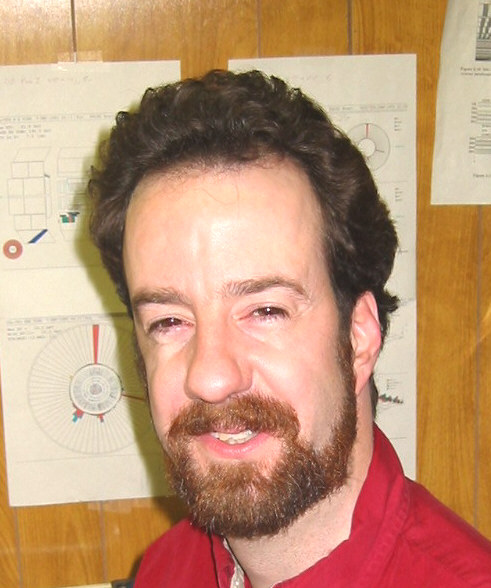Welcome to Robert Kehoe's Homepage

Contact Information
Department of Physics
Rm. 113 Fondren Science Bldg.
Southern Methodist University
phone: (214) 768-1793
email: kehoe@physics.smu.edu
Research Interests
My interests focus primarily on the phenomena that occur at the smallest distance scales and at the earliest times in the universe. Most of my experience has been in studying the process by which nature's most fundamental particles obtain mass. This is currently understood as resulting from the breaking of a symmetry in nature for a fundamental force called the electroweak interaction. The electroweak interaction itself is how we now understand the common phenomena we experience of light, electricity and magnetism, as well as the more rare processes that lead to several forms of radioactivity. The symmetry breaking occurs via the action of a fundamental particle called the Higgs boson.
I study this electroweak symmetry breaking in two ways. The first is the measure precisely the mass of the top quark, the most massive fundamental particle we know. This particle has a number of fairly unusual features that follow from its unique mass, and these include a great sensitivity to the way electroweak symmetry breaking occurs. A precise measurement of this mass provides a strong constraint of the electroweak theory. Currently, we are getting to levels of precision that were not thought possible even a few years ago. The work of my group here at SMU was used to predict the Higgs boson mass before its discovery in 2012.
The other way I study electroweak symmetry breaking is by directly searching for the Higgs boson, and studying its properties. The Higgs boson is also a very strange particle with unusual properties. Finding it and testing it against predictions has been a goal in particle physics for many years, and finally at the Large Hadron Collider we have an instrument powerful enough to do that. I've worked on studying some of the theoretical calculations that experimentalists need to do to ensure that they understand the backgrounds that can be mistaken as a Higgs particle. It was very exciting to see an excess of events in the particular analysis I was working on in summer 2012, which contributed to the final discovery paper for the ATLAS Collaboration. In this case, the Higgs was right where it was predicted to be. Since then, I've continued to focus on determining what the properties of the Higgs boson are, and so far all results are consistent with the particle predicted by the electroweak theory.
There is still a lot of work to do, and a lot of exciting study of this new particle. The upgraded LHC will be a perfect place for this work.
Another way to look at the fundamental processes in nature is to look at the very large scale in cosmology. A significant amount of my experience has been in the study of gamma-ray bursts and supernovae, two class of huge explosions that appear to correspond to some stage at the end of a star's life. Supernovae were used in the late 1990's to establish the presence of a new form of energy or interaction in the universe that is causing the universe's expansion to accelerate. This is termed 'dark energy' because we have yet to determine what process is actually driving this acceleration. Remarkably, it totals 70% of the universe's total energy! Currently, I work with SMU graduate students and undergraduates to understand different types of supernovae that may be used to constrain our understanding of dark energy.